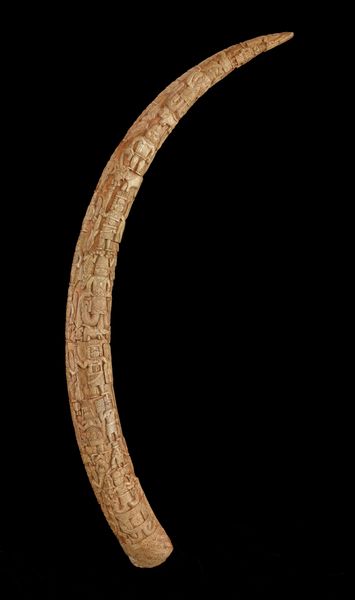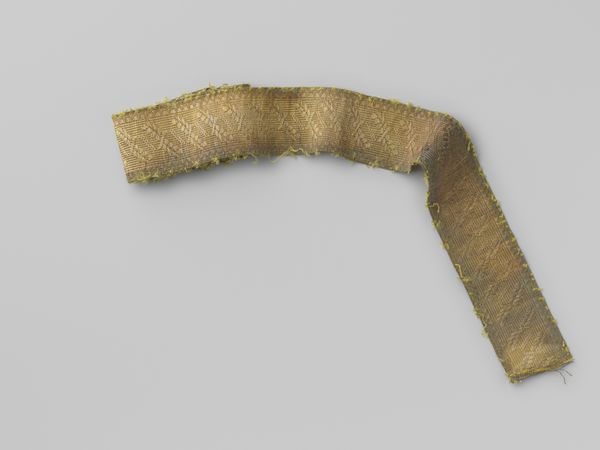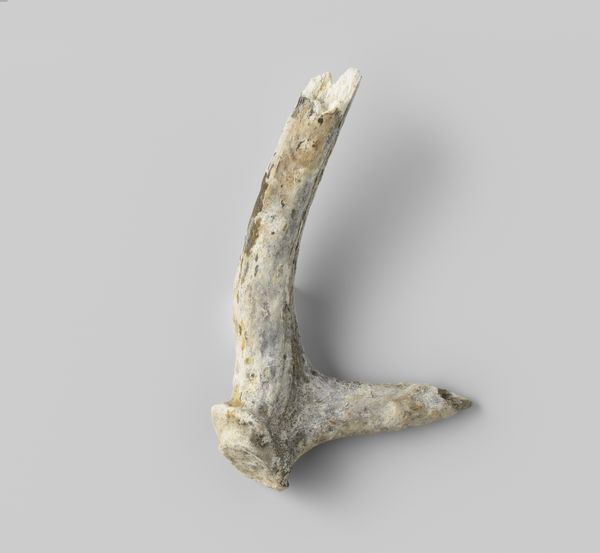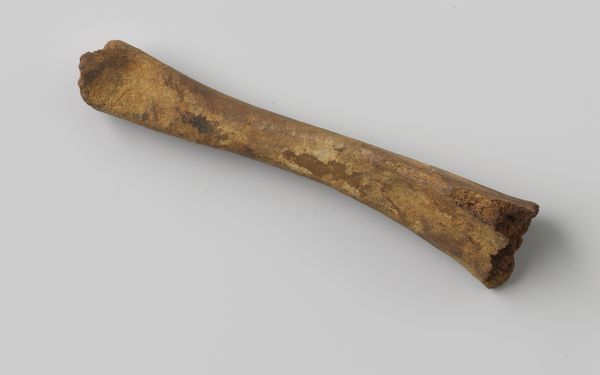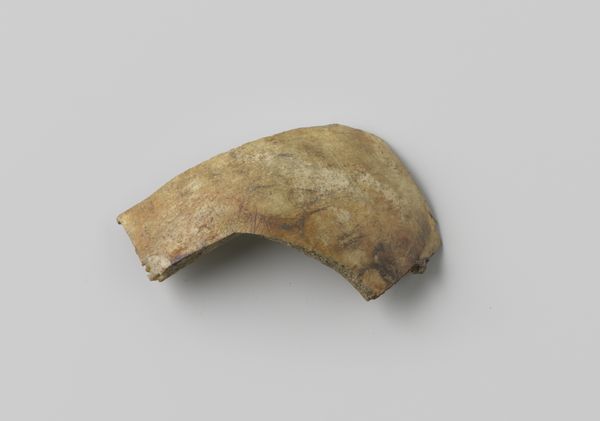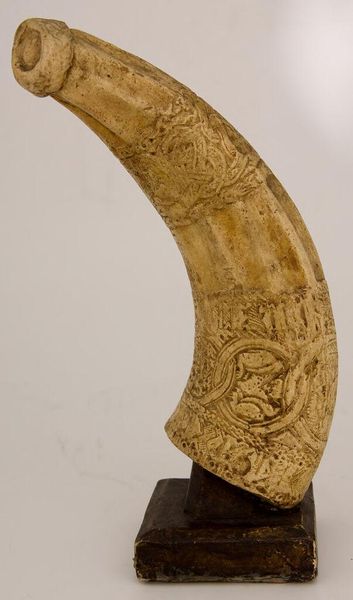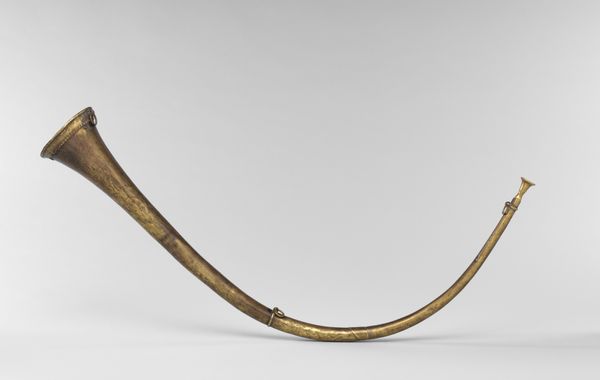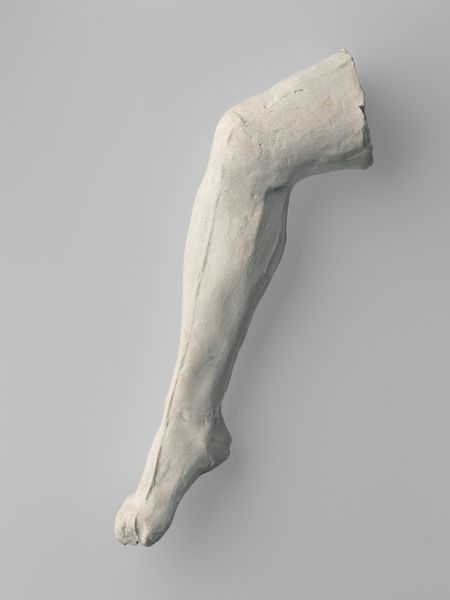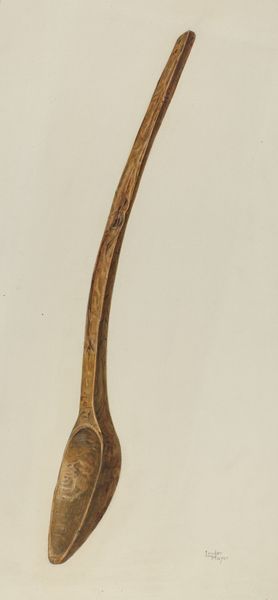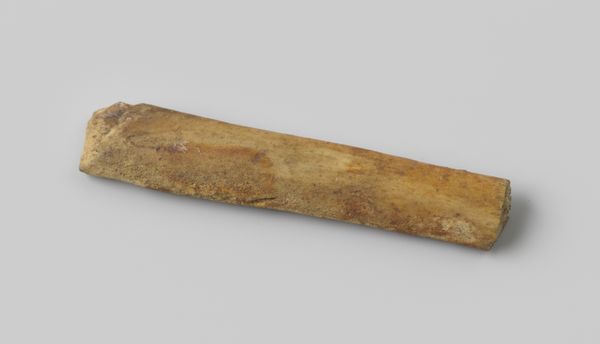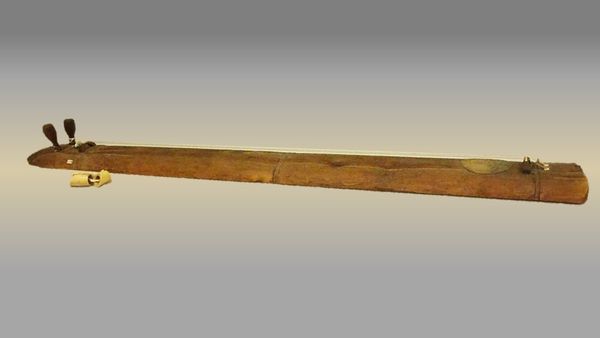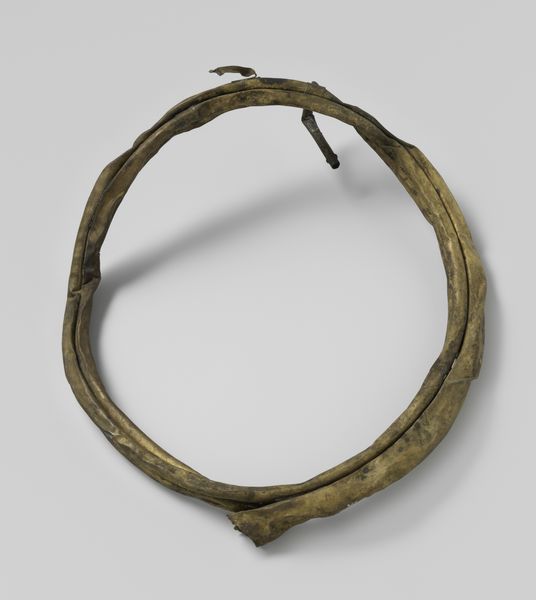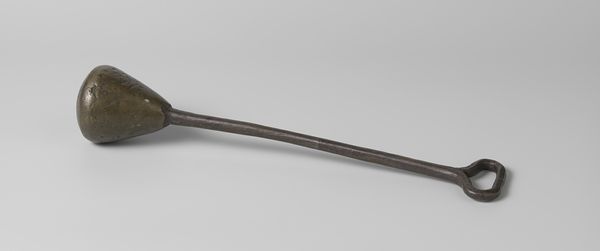
carving, ivory
#
carving
#
narrative-art
#
figuration
#
ivory
Dimensions: 150.5 × 195.6 × 12.7 cm (59 1/4 × 77 × 5 in.)
Copyright: Public Domain
This carved elephant tusk was created by an Edo artist in Benin, a kingdom in what is now southern Nigeria. The tusk would have originally been placed on an altar dedicated to royal ancestors, and it is intricately carved with images that reflect the kingdom's history, beliefs, and social structure. Figures of kings, warriors, and priests are depicted alongside symbols of power and authority, such as leopards and mudfish. The visual language is dense and complex, reflecting the highly structured society of the Benin kingdom. These tusks speak to the interconnectedness of trade, power, and artistic production. Ivory was a valuable commodity, and its use in royal art underscored the king's wealth and status. The tusks also testify to the cultural exchange between Benin and Europe, as European traders played a role in the ivory trade. By researching Benin's history, religion, and political system, we can begin to understand the layers of meaning embedded in this remarkable work of art.
Comments
No comments
Be the first to comment and join the conversation on the ultimate creative platform.
